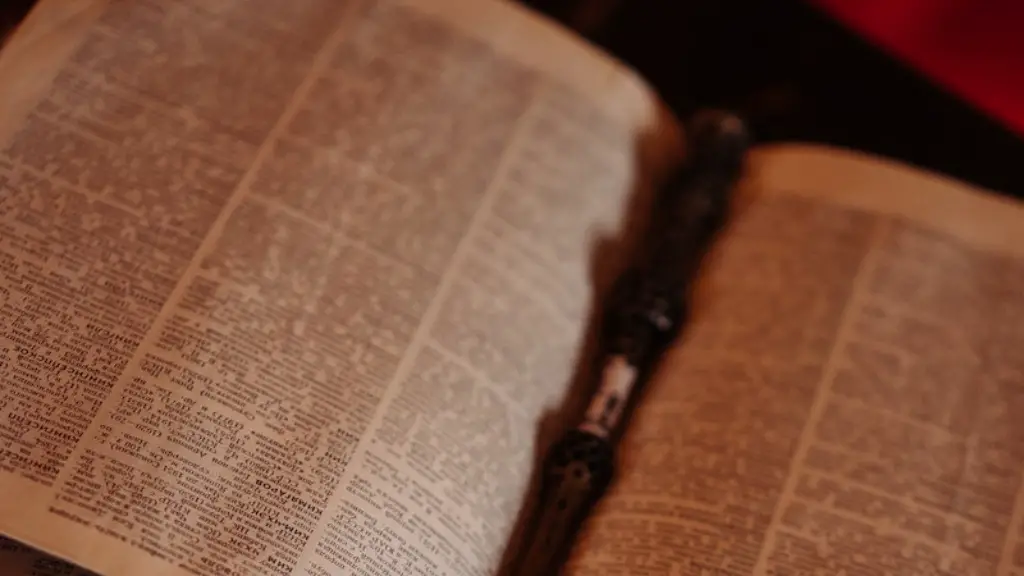William Blake was an English poet who wrote during the Romantic era. He is best known for his collection of poems, Songs of Innocence and Experience. The collection is comprised of two sets of poems, each with its own theme and tone. The first set, Songs of Innocence, presents a childlike view of the world full of hope and wonder. The second set, Songs of Experience, presents a more cynical view of the world, full of suffering and despair.
There are many possible reasons why William Blake wrote Songs of Innocent and Experience. One reason may be that he wanted to explore the contrast between innocence and experience, and how they related to each other. Another reason may be that he saw the two states as two sides of the same coin, and wanted to show how they were interconnected. Whatever the reasons, Blake’s work is considered a classic of English literature and continues to be studied and admired today.
What did Blake mean by innocence and experience?
Innocence and experience are two important states of the human soul. Blake is saying that a human soul is innocent through its youth and gains experience as it gets to adulthood. This is an important point because it helps us understand how we grow and develop as people. It also helps us to appreciate the importance of both innocence and experience in our lives.
William Blake believed that innocence and experience were two contrary states of the human soul. He developed this idea through his poetry, specifically in The Marriage of Heaven and Hell. In this work, Blake wrote that without contraries, there is no progression. He believed that the two states were necessary for human growth and development.
What do the Songs of Innocence teach us about life
The Songs of Innocence is a collection of poems by William Blake that explores the lives of children and their transformation into adulthood. Some of the poems are written from the perspective of children, while others are about children as seen from an adult perspective. The poems offer a glimpse into the hopes and fears that inform the lives of children, and how these change as they grow older.
The poem reflects on the social, political and religious circumstances during the 18th century. The poem analyzes and points out cruelty and injustice occurring in the society and criticizes the church and the British monarchy.
What is the symbolism in Songs of Innocence and experience?
The Songs of Innocence by William Blake is a collection of poems that explore the theme of innocence. The poems focus on the idea that innocence is something that is pure and should be cherished. The poems also explore the idea that innocence can be lost over time. The oak tree in The Echoing Green symbolises old age and the poem as a whole can be seen as a symbol for the life of man. The poem starts with a description of a young child playing in a green field and ends with the child being old and grey. The poem shows how innocence is something that is lost as we get older and how life can be a journey from innocence to experience.
In 1789, William Blake wrote “Songs of Innocence.” These poems were written from the perspective of a child and focused on the theme of innocence. However, in “Songs of Experience,” Blake shows that innocence is corrupted and destroyed by human experience. This is a powerful message that still resonates today.
What inspired William Blake to write poetry?
As one of the most influential poets of his time, William Blake was often known for his dark and mysterious poems. However, many don’t know that one of the most tragic events in his life occurred in 1787 when his beloved brother, Robert, died from tuberculosis. Blake was reportedly at his brother’s side when he passed away and allegedly saw his spirit ascend through the ceiling. This moment had a great impact on Blake and his later poetry.
It is important to remember that experience does not always have to be negative in order to produce songs of sorrow. Blake believes that all things have the potential to be poetic, and that it is our job to help them realize that potential. Even in our own lives, we should strive to find the poetic expression that longing for song.
What are the characteristics of Song of Innocence and experience
Childhood is often seen as a time of innocence, when children are free from the cares and worries of the world. However, some argue that childhood is also a time of experience, when children learn about the harsher realities of life.
The division between childhood and adulthood is often seen as a repression of childhood by society. Some argue that this division is necessary, as it allows children to grow and develop at their own pace. Others argue that this division is harmful, as it leads to the suppression of childhood experiences.
The indictment of the Church is often seen as a symbol of the division between childhood and adulthood. The Church is seen as a repressive force that suppresses childhood experiences. Some argue that the Church is necessary, as it provides a moral foundation for society. Others argue that the Church is harmful, as it leads to the division of society into two groups: those who are religious and those who are not.
The Songs of Innocence and of Experience were intended by Blake to show ‘the two contrary states of the human soul’. The Tyger is the contrary poem to The Lamb in the Songs of Innocence. The Lamb is about a kindly God who ‘calls himself a Lamb’ and is himself meek and mild.
What is the central idea of Songs of Innocence?
Songs of Innocence and of Experience is a collection of poems by English poet William Blake. The poems are arranged into two sections, “Songs of Innocence” and “Songs of Experience”. The “Songs of Innocence” are about the purity and simplicity of childhood, while the “Songs of Experience” are about the cruelty and harshness of adulthood. Blake’s vision embraces radical subjects such as poverty, child labour and abuse, the repressive nature of the state and church, as well as the right of children to be treated as individuals with their own desires.
The theme of a poem is the lesson or message that the poem is trying to communicate. This could be about love, loss, nature, or anything else. Understanding the theme of a poem can help you to better understand the poem as a whole.
What are major themes of William Blake poetry
“The Lamb” is a poem by William Blake, published in Songs of Innocence in 1789. The poem argues that innocence is not the opposite of experience, but a kind of divine childlikeness, which is also a form of wisdom. The poem is about a lamb, which represents Jesus Christ, and how it is seen as both innocent and wise.
Blake’s symbols are often children, flowers, and particular seasons to represent innocence. Meanwhile, urban and industrial landscapes and machines may represent oppression and rationalism.
What is the main theme of the poem Why?
The central theme of a poem represents its controlling idea. This idea is crafted and developed throughout the poem and can be identified by assessing the poem’s rhythm, setting, tone, mood, diction and, occasionally, title. The theme of a poem can be stated directly or indirectly, and it can beSingle words can be themes, as can longer phrases. Themes can be universal, addressing aspects of the human condition, or personal, concerning the life and experience of the poet.
Allegorical interpretation of the Bible is not limited to any single religion. Christians and Jews have both used allegorical interpretation to understand the Bible’s deeper meaning. For Christians, the book of Hosea is often seen as an allegory of Christ’s love for his church. For Jews, the book can be interpreted as an allegory of God’s love for the Israelites. In both cases, the deeper meaning of the text is understood through allegory.
What was the theme common to the Songs of Experience
The poem “The Pebble of the Brook” is a great example of how cynicism and disillusionment can be highlighted in poetry. The pebble is implied to be hardened and cold, and Blake also personifies the archetypes of the clod and the pebble. Both the clod and the pebble are mouth pieces that voice the contrasting extreme views on love.
The Song of Songs is a beautiful, poetic expression of love between a man and a woman. While it doesn’t explicitly mention the relationship of God and man, it’s possible to find meaning in it through allegory. In this interpretation, the love between the man and woman in the Song of Songs is analogous to the love between God and man. This love is pure, passionate, and everlasting. Just as the lovers in the Song of Songs long for each other, so too do we long for God.
Final Words
There is no single answer to this question; it is likely that Blake had multiple reasons for writing his famous collection of poems entitled Songs of Innocence and Experience. Some potential reasons for why Blake might have written these poems could include a desire to explore the contrasting themes of innocence and experience, or to comment on the ways that humans can transition from a state of innocence to experience (and vice versa). Additionally, Blake may have written these poems as a way to critiqued the social and political issues of his day, or to offer his own unique perspective on the human condition. Ultimately, it is up to the reader to decide why Blake wrote these particular poems; there is no one answer that is definitively correct.
William Blake was a poet and artist who was influenced by the French Revolution and the Industrial Revolution. He wrote “Songs of Innocence” to express the hope and innocent view of life that he had as a child. He wrote “Songs of Experience” to show the darker, more difficult side of life that he saw as an adult.





